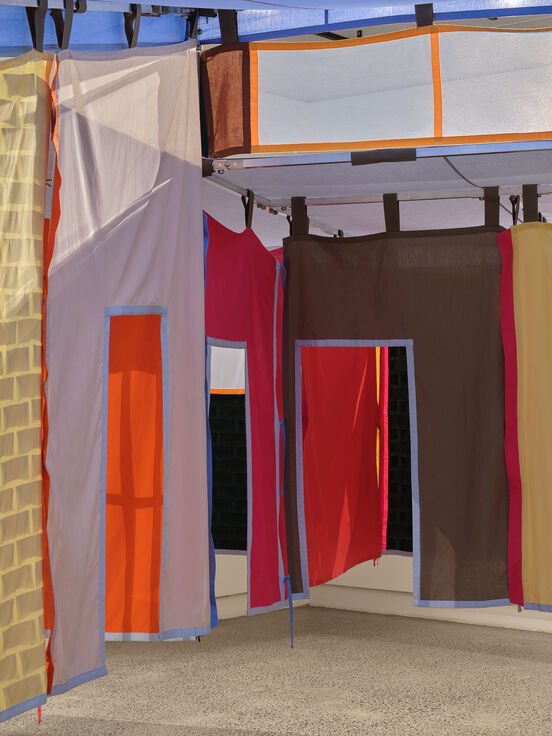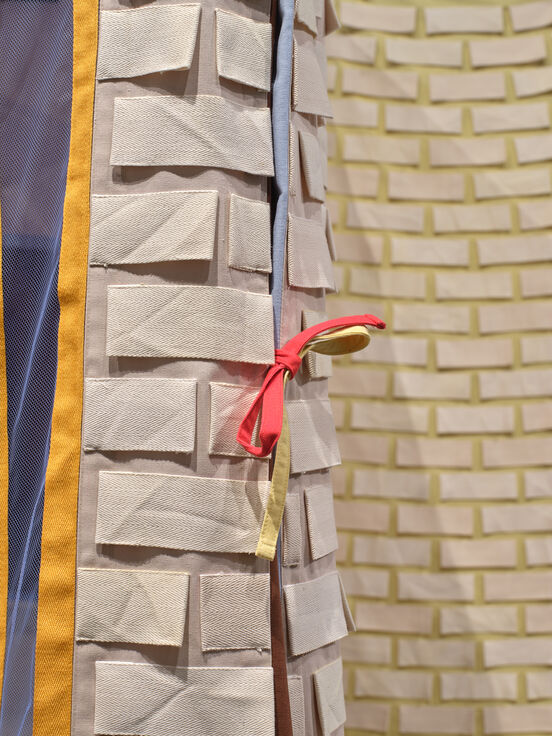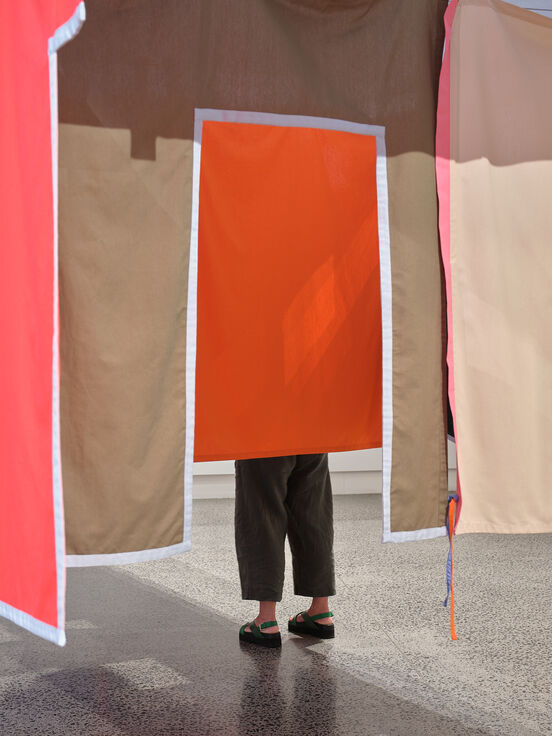On a prominent corner in Fitzroy North, Naarm Melbourne, the Emely Baker Centre sits within the northern perimeter of Edinburgh Gardens. Though located in plain sight, the building strangely evades notice, a shadow of its namesake who has all but disappeared from the public record.
Designed in 1971 in the ‘International Style’ by K. Murray Forster and Walsh Architects, this now empty building has seen little use since it ceased operation as a child and maternal health centre in 2008. Located on the unceded lands of the Wurundjeri people of the Kulin Nation, the building and its landscape is embedded in a history, typical of colonial urban projects, of deliberate, continual and insidious erasure of Indigenous peoples and ecologies.
For Objectspace, Esther Stewart rebuilds the centre in the form of a sectional model, made rigorously at 1:2 scale. Created within the constraints of material optimisation and minimising waste, I was moving too fast to see is a modularised construction. Using the language of fabric – tabs, casings and plackets – each panel, delineated by the width of the fabric bolt, has been cut, sewn, labelled and indexed, forming a kit of parts for relocation.
Levitating within the gallery, the soft sculpture is not a mirror or double of the Naarm building, but a herald of future possibility. Far from being neutral or static, the Emely Baker Centre and its context are continually evolving. After 10 years of dormancy, the building tentatively reopened in 2018 as a venue, available for hire via a convoluted bureaucratic system. However, given the current state of neglect and under-use, it seems the building may be the next entity to leave the gardens without trace.
Stewart’s engagement with this building offers the opportunity for reassessment – of the specific building and site, but also of contemporary building practices more broadly. Holding the potential to be reassembled in different configurations, I was moving too fast to see offers a model of ‘adaptive reuse’ that operates as both a critique of existing power structures and a speculative reinvigoration of potential use.
—
With thanks to:
Nicole Lawrence (Duetto Studio)
Sally Mill
Adam Wood
In studio assistance:
Vincent Meyrick
Madeline Simm
Dalton Stewart
Leilani Turner
—
Esther Stewart lives and works in Naarm Melbourne, Australia. She creates paintings and installations that call on visual languages and concepts from architecture, design and geometry. Recently, Stewart has collaborated with architects and craftspeople to extend the spatial and material possibilities within her practice. Recent major works by Stewart exhibited in Melbourne Now at the National Gallery of Victoria, Melbourne, and in The National 4: Australian Art Now at the Art Gallery of New South Wales, Sydney.
Stewart completed a Bachelor with First Class Honours at the Victorian College of the Arts, Melbourne in 2010, where she has lectured in the School of Sculpture and Spatial Practice, and completed a Masters of Architecture in 2023. Stewart has worked on major commissions for Bendigo Hospital, SlowBeam, ChenChow Little, Shepparton Art and for the Crowsnest Metro City train station in Sydney. Her work has been exhibited nationally and internationally at galleries and art fairs, including at the Heide Museum of Modern Art and the Australian Centre for Contemporary Art (ACCA).
Stewart’s work is held in public and private collections internationally, including Heide Museum of Museum of Modern Art, Auckland Art Gallery Toi o Tāmaki, National Gallery of Victoria (NGV), Artbank, Australia; Ballarat Art Gallery; and Lyons House Museum, Melbourne. She is represented by Sarah Cottier Gallery, Sydney and Station Gallery, Melbourne.





